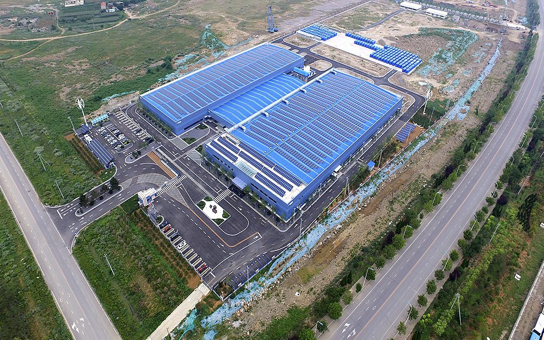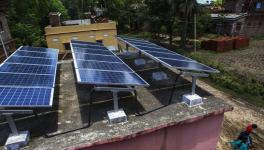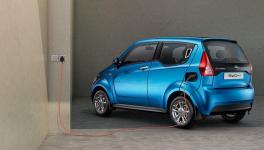Advances in ‘Flow Batteries’ Bring Hope as Alternative Energy Sources

The site of world’s largest vanadium flow battery manufacturing, China. Image courtesy: electrek.co
Batteries have travelled a long way since their invention in 1800 by Alessandro Volta. Now trials are under way to use batteries for giving power to an entire electric grid. If this can be employed for practical utility, it could be a huge source of alternative energy, especially when the world is desperately looking for renewable energy sources as an alternate to the fossil fuels and hydroelectric fuels.
The most common way by which electricity is generated by converting chemical energy to electrical energy either through combustion of fossil fuels in generators or through releasing water from dams in the hydroelectric projects. Both ways of generating electricity have potential adverse effects for the environment. However, the energy demand of today’s world is no way going to decrease in the coming times. Thus, comes the necessity of exploring alternate sources for generating electricity as a result of which there has been a rise in the utilisation of wind and solar power. But when the sun doesn’t shine and the wind ebbs, huge devices called flow batteries having large tanks of electrolytes that can store enough electricity and have the capability to power thousands of houses for long hours could be a potential source.
Flow batteries are rechargeable batteries which have an electrolyte containing one or more elements in large tanks. The electrolyte carries charges and is pumped through an electrode assembly called a stack. The stack contains two electrodes separated by an ion conducting membrane. This set up of a flow battery allows huge volume of electrolytes to be stored in the tanks. Moreover, the tanks have no size limits, the storage capacity can be increased as needed which makes them ideal for storing large amounts of power for the grids.
Vanadium or Lithium: Which is Better?
The most advanced flow batteries in use today are the vanadium redox batteries (VRB). The VRBs have vanadium dissolved in a water-based solution as the electrolyte. Vanadium is used because its ions are stable and can be cycled through the battery over and over again with lesser chances of unwanted side reactions. The ions of vanadium are the sources of charges.
The largest vanadium flow battery of the world manufactured by Rongke Power, in Dalian, China, is supposed to come to the market by 2020. The battery will store 800 megawatt hours of energy that will be enough to power thousands of homes.
But this vanadium based batteries have a problem—vanadium is a very costly element and also have a relatively low energy density. Energy density refers to the amount of energy that a system can store in it’s per unit volume.
Lithium ion batteries—used in laptops have a much higher energy density than the VRBs. But these lithium ion batteries don’t quite go well for providing power to huge network of electric grid as in cities. In 2015, a team of researchers led by Qing Wang of the National University of Singapore brought about a sort of hybrid solution to the problem of the lithium ion batteries. In the external tanks they used lithium iron phosphate (LiFePo4) and titanium dioxide (TiO2) as the chemicals that act as the electrolyte.
Since then, researchers are engaged in bringing about new ways of developing flow batteries for power generation. In July this year, Harvard University material scientist Michael Aziz and his team reported of developing long lived organic molecule that loses only three per cent of its charge carrying capacity per year. This can be proven a good progress in developing organic flow batteries. Also, there are reports of efforts being made to use iron and ammonium in developing flow batteries.
Although, it’s too early to say which kind of flow battery will help in the direction of developing renewable electric grid, the importance of flow batteries as an alternative source of energy cannot be ignored.
Get the latest reports & analysis with people's perspective on Protests, movements & deep analytical videos, discussions of the current affairs in your Telegram app. Subscribe to NewsClick's Telegram channel & get Real-Time updates on stories, as they get published on our website.





















